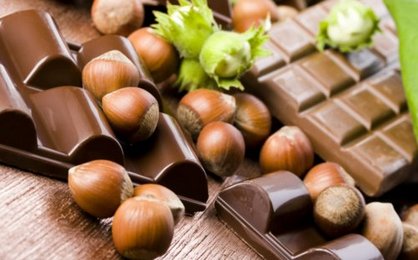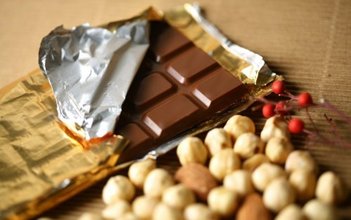 Candy wrapping, just like any other wrapping is very important if you have a business involving such a product. Of course, you may be interested in wrapping candy for a friend of yours or something similar, but mainly, people want to make special wrappers for their own candy shops. You have to agree that when it comes to a candy shop, aside from seeing the common candy, you might want to find some specialties that are wrapped in a fancy wrapping, that give you a feeling of "something different".
The designs you may want to create for your own market should be delicate, interesting and yet cute. Think about it, we are discussing about candy, not engines and bolts, therefore everything has to be built in an attractive manner. For example, you can think of a background that is either soft pink, or peach with some sheer lines or dots. Another thing you should do is match the wrapping style to the candy store appearance. Make it blend somehow in the store, and not create significant discrepancies (i.e. in a sheer pink store, all the candy wrapping flashing blue or flashing red).
The front of the market should mention the name of the shop (or market) in cute letters while the back can be left blank you can put your website address or something similar. Try to find a font that matches the whole idea of the wrapping, and that is also easy to read. Remember the thing I told you about discrepancies? Apply it here too!
In order to make your business even more popular you can try having ready wrappers for different occasions. For example, you can have candy schoko adventskalender wrappers for baby showers in specific colors, or wedding wrappers, in white with somewhat of a satin bow. Other occasions include anniversary, birthday, Valentine's Day (do not forget the heart wrapping) and so on.
 Candy bars have been around for hundreds of years. Yes, hundreds. One of the first candy bars ever created was made in 1847. Joseph Fry figured out a way to mix cocoa powder, sugar, and cocoa so it could be made into a paste and placed in molds. It was a success. People enjoyed eating the chocolate as much as they did drinking it. However, this chocolate bar and the candy bars we are familiar with are completely different.
It was not until 1876 that milk chocolate was invented by Daniel Peter from Switzerland. It took him eight years to do this. It only took three more years for Daniel Peter to join with Henri Nestle to form the Nestle Company. This company introduced the famous Nestle Crunch in 1938.
We are getting ahead of ourselves. Let's go back to 1900. Milton S. Hershey decided it was time to let everyone taste the wonders of milk chocolate. Up until then it was only the wealthy who could really afford this wondrous confection. Locating his candy factory in dairy country, now known as Hershey, PA, Milton was able to start mass producing candy bars. The all time American favorite (Hershey) was introduced to the public. Eight years later, in 1908, Hershey started putting almonds in them and the Hershey with Almonds was born.
Once milk chocolate became so popular everyone started creating candy bars. The Mars candy company was formed by Frank and Ethel Mars in 1911. 1914 brought about the introduction of the Heath bar. Peter Paul Halijian invented Mounds in 1921. These candies were marketed under the name of Peter Paul Mounds. The Almond Joy was not introduced until 1947.
Chocolate candy bars were being created by the hundreds. The candies we are most familiar with such as the Butterfinger and Milky Way were introduced to the public in 1923. 1925 saw the invention of the Oh Henry, Baby Ruth, and Mr. Goodbar.
The 1930's brought about an even bigger demand for the chocolate. This is because the Hershey Company had created a chocolate bar for the boys schoko adventskalender who were fighting in the first and second world wars. When these soldiers came home, they wanted more chocolate. From 1930 to 1938 products like Snickers, 3 Musketeers, Kit Kat, and Nestle's Crunch gave the public what they wanted.
 Come on, admit it. You do it too! Whenever I see a bag of gold coins for sale in a store, I just have to reach out and touch them. The allure is tremendous: gold color, the idea of monetary value and, of course, chocolate. The fascination with these little gems predates the current popularity of the Pirate of the Caribbean movies.
In their most basic definition, chocolate coins are disks of chocolate molded into the shape of coins and covered in a gold foil, stamped with an image to resemble a coin. The latest trend in chocolate coins is to have them embossed with designs or personalized messages. These are marvelous for wedding favors, engagement or baby announcements, etc.
St. Patrick's Day celebrations in March also use chocolate gold coins to fill the pots of the leprechauns. According to the legend, leprechauns keep their pots of gold at the end of rainbows. If you catch a leprechaun, he must lead you to his treasure and, if he loses his gold, he loses his magic and becomes more and more human.
September 19th has been designated as "Talk Like a Pirate Day," and Pirate themed parties are very popular on this date as well as throughout the year, especially for little boys' birthday parties.
In addition to the yummy gold coins, there are many other Pirate Candies to select from. For the lollipop lovers, there are Crazy Bones Skeleton lollipops and Pirate Skull Head lollipops shaped just as the name describes. Bone Heads Skull candy comes in packets with the scary skull shape in many colors and the flavor of sweet tarts. M&M's makes three different bags of Pirate Candies: Jack's Gems Milk Chocolate M&M's, Captain's Gold Peanut M&M's, and Pirate Pearls White Chocolate M&M's.
Hershey's Nuggets are shaped like little treasure boxes and come wrapped in gold and silver foil. The Nuggets are moderately priced, and these little treasures can extend your candy budget when mixed in with the gold coins. Other treasure box items available to add excitement to your party are Pirate Candy Treasure Chests, which contain a small toy, a treasure map, and yummy candy. What a terrific party favor these little treasure boxes make! To delight the feminine party goers, add some pastel colored Candy Necklaces or some luscious Ring Pops. You can never lose by offering a lady some "bling," regardless of her age.
 Easter is on its way and it is time now to start preparing ourselves. Easter is celebrated a bit differently by people around the world, and in fact there are many who do not recognize Easter. But for those of us in America Easter is a time for celebration. Many of us look forward to a large meal on that special Sunday while others like to approach Easter in a faith-based recognition of the holiday's true meaning. But needless to say everyone starts to think about candy around this time of year. Its true, candy is a staple around American's homes come Easter time.
Easter comes in right behind Halloween for candy purchasing. We consume around 8 billion pounds of candy a year in our country, and Easter time generates a significant amount candy purchasing.
Every year the markets swell with beautiful pastel and chocolate candies displayed to tempt the heartiest of saints. Store shelves are filled with colorful Jelly Beans, chocolate bunnies, chicks, and eggs, as well as those adorable little Marshmallow Peeps. By the way, reports say that in "1957 it took 27 hours to make a Peep and today it only takes 6 minutes." M&M's now come in lovely spring pastels rather than the usual reds, greens, and browns to help us celebrate Easter.
The candy celebrations at Easter feel like they have been around forever, but it appears that is not the case. There are some treats that popped up in Europe that could have lead to our sweet tooth around Easter each year. An English tradition of hot cross buns for breakfast on Good Friday could very well be the original Easter treat. Many Europeans also enjoyed baked pretzels as a special treat around Easter. In the 1800s chocolate became more readily available in Europe and boom, there you have it, the start of Easter candy madness. Chocolate could be made in all kinds of shapes and sizes, most importantly an egg shape, and thus became hugely popular, especially to those with a sweet tooth.
And so, we celebrate the Easter season with all its symbolism, both Christian and pagan. We remember our family traditions and gatherings. For many it is a time of religious reflection and for some it is more secular in character. We celebrate with Easter bunnies and chocolate eggs. We give and get baskets full of grass and sweets. We watch our little ones rise on schoko adventskalender Easter morning with awe on their faces and delight in their eyes, and we know once more a sugar induced wild spree is on the horizon. Oh, well, sit down and enjoy one more Peep before you start the day. It's Easter!
|




 RSS Feed
RSS Feed